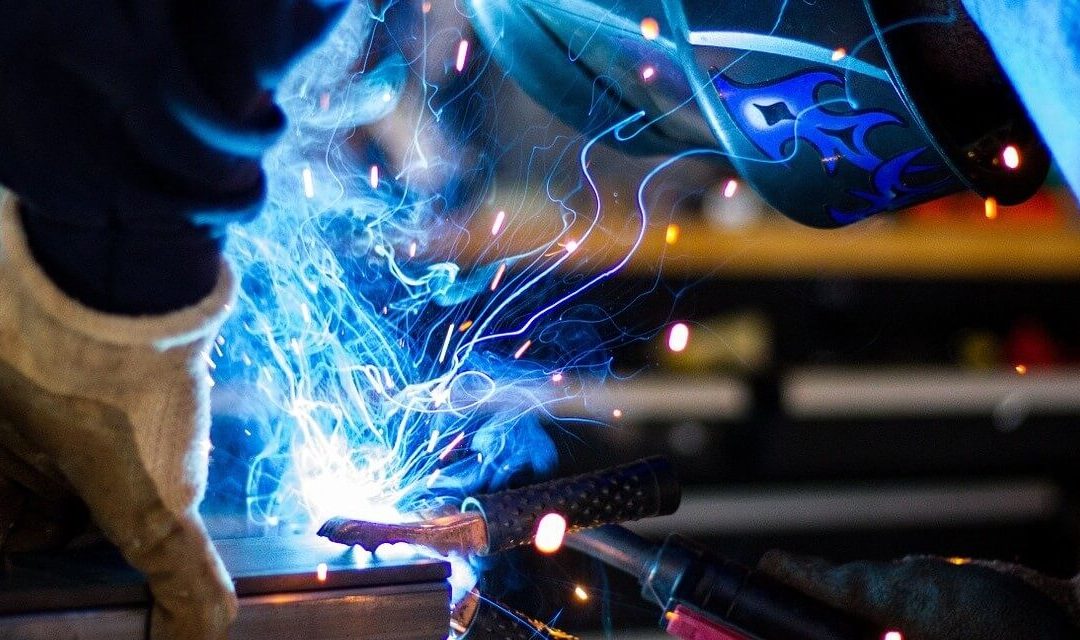At Nocti Business Solutions (NBS), our primary focus is always safety, which is why each of our assessments has a strong emphasis on industry-specific safety rules and regulations. In this article, we would like to focus your attention on the safety of welding professionals. Due to the construction and economic boom throughout the US along with the growing Skills Gap, we’re seeing an increasing demand for skilled welders across the nation. In fact, the demand for the profession is expected to grow 26% by 2020. With such an increasing demand and growth of popularity for our Experienced Worker Assessment for Welding, we thought we’d share some safety tips.
Importance of welding safety
It’s no secret that welding can be extremely dangerous if the workers do not take the proper steps and precautions. Welding is the liquification of a base metal with heat and, often, molding metals together. Such a task requires intense heat, usually starting at a minimum of 5,000 degrees Fahrenheit. At that temperature, one can easily imagine what would happen if safety is not the first priority.
Keep in mind, there is a large variety of welding systems, and we focus on each within our assessment tests, most of which will fall into the following three categories.
Three common systems of welding
- MIG (metal inert gas welding)
- STICK (shielded metal arc welding or SMAW)
- TIG (tungsten inert gas)
4 basic welding safety rules
Below are four basic rules for welding safety that should be applied to any type of welding. No matter the type, welding requires a significant amount of heat, generally over 5,000-degrees Fahrenheit. Anytime you’re dealing with temperatures that hot, safety steps are imperative. With that in mind, we’ve provided a few safety tips to help you keep yourself, and your fellow workers, safe.
Wear the proper equipment and gear
A bit obvious, but with so much controlled heat—if that heat ever becomes uncontrolled—it can produce a highly dangerous environment. Always protect yourself and ensure that you don’t have any exposed skin. To do so, wearing the following equipment is highly recommended:
- Welding mask or shield
- Welding apron
- Closed steel toe boots
- Welding jacket
- Long sleeve nonflammable shirt
- Welding gloves
- Denim pants
Don’t forget to breathe
Welding any type of material produces dangerous fumes, normally a complex mixture of metallic oxides, silicates, and fluorides. Long-term exposure to these fumes can lead to a plethora of health disorders, including lung cancer. Too much exposure can even cause immediate serious conditions, such as cardiac arrest or loss of consciousness. In any case, protect yourself, especially in an enclosed environment. Exhaust masks or exhaust vents (permanent or tempory) are great tools to ensure that you protect yourself and your fellow welders from toxic air.
Turn down the lights
Welding is also extremely bright, in some cases as bright as the sun, and just like the sun—it’s extremely harmful to stare directly into the light. So, always protect your eyes. One option is to ensure that your mask or shield has the proper protection against UVA and UBA burns. If your mask does not have the right protection, welding-safety glasses are also a viable option.
Follow the rules
With the dangers that come along with welding, it is imperative to follow the rules. No matter the size or scale of any shop or factory, workers must follow the safety rules and procedures. If not, their mistake could lead to serious injury or even loss of life. We cannot stress this enough—safety must be an intricate part of any work environment that involves welding.
This is just the tip of the iceberg when it comes to welding safety but this is a great starting point to keep you and your workers safe.
Keep your workfloor safe with Nocti Business’ welding assessments
At NBS, we understand the importance of safety in any trade, especially welding. That is precisely why we take pride in ensuring that every welder has the knowledge and skills to maintain a safe work environment. With our Experienced Worker Assessment for Welding, supervisors, and employers ensure that every employee understands the safety standards of the job. This assessment test is designed to examine the competencies and skills of welders, with a heavy emphasis on safety. If you are interested in using our assessment test for your welding team, contact us today.

Recent Comments